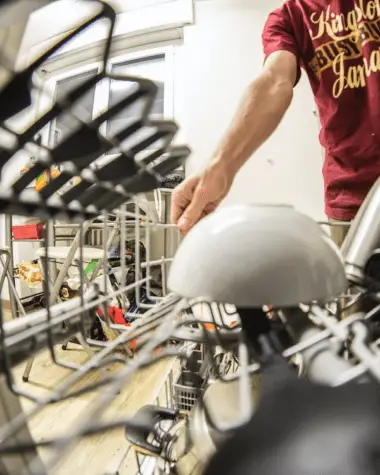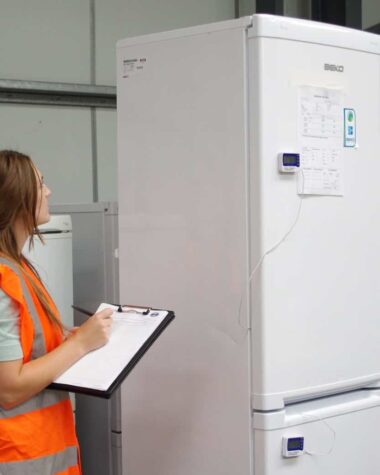Bacteria can be found everywhere, even in the most severe settings, such as frozen winter. And if you think your home, particularly your appliances such as dishwashers, are impervious to microorganisms, we’re afraid you’re mistaken.
In a study conducted by the University of Copenhagen students, they investigated the microorganisms residing on a dishwasher by analyzing rubber seals from 24 household dishwashers. Following analysis, several bacteria were discovered, including Pseudomonas, Escherichia, and Acinetobacter.
With these creatures potentially hiding in your dishwashers, you may ask how safe your equipment is and how you can keep them from harming your family. Don’t worry; we’ve got your back; we’ll go over the basics and how you can eliminate these potentially dangerous bacteria and fungi.
Why Do People Buy Dishwashers Anyway?
Dishwashers have become commonplace in most homes due to the convenience they provide. This kitchen equipment saves time and energy costs because it uses 3 gallons of water compared to hand washing. This is thanks to the Department of Energy regulating dishwashers to use a specific amount of water.
Related Article: Hand-Washing vs. Dishwashers: Which Is Better?
Additionally, it keeps its dishes sanitized following contact with raw meats or other foods that can be contaminated with pathogenic bacteria and fungi. There are particular dishwashing cycles that most owners feel will make their dishes clearer and safer; however, this is not always the case.
What Microorganisms Could Be Found in My Dishwasher?
During the study, these bacteria and fungi were found and sampled while thriving in a dishwasher. The water’s age, use, and hardness all significantly influenced the microorganism buildups tested. These potentially hazardous microorganisms grow in dishwashers, posing a serious threat:
Bacteria
1. Pseudomonas
This kind of bacterium is found everywhere and can cause health problems depending on where the infection develops. This, however, only endangers persons with weakened immune systems.
2. Escherichia
This bacteria is widely found in the intestines of humans and animals. Escherichia comes in several types, such as E. Coli, which is the most common cause of urinary tract infections (UTIs), gastrointestinal disorders, and female reproductive complications.
3. Acinetobacter
This is a kind of bacterium that is commonly found in hospitals and intensive care units (ICUs). Acinetobacter is commonly responsible for pneumonia, urinary tract infections (UTIs), and meningitis.
Fungi
1. Candida
This form of yeast develops in small quantities in locations including your mouth, stomach, and skin. However, these microorganisms can multiply rapidly, produce yeast infections, and thrush when certain environmental conditions are met.
2. Cryptococcus
This is a fungus that is often found in soil that has been contaminated by bird droppings or decomposing wood. Inhaling this fungus can result in cryptococcal meningitis, which can be deadly, especially in those with weakened immune systems.
3. Rhodotorula
This dangerous pathogen causes bloodstream infections in persons with poor immune systems. It is most known to occur in hospitals, with most infections caused by catheter use or persons who have had organ transplants or chemotherapy.
How to Reduce the Risk of Microorganism Exposure
Use Soft Water
Hard water is one of the primary causes of organism development in your dishwasher. It can also leave a film on your dishes, serving as a breeding ground for microbes long after you’ve washed them. Using soft water helps to properly clean your dishes and lowers the likelihood of water stains on your glassware and silverware, giving you confidence that you are using fully sanitized dishes.
Related Article: Hard Water vs. Soft Water: Which is Better for Your Dishwasher?
Clean Your Dishwasher Often
Clean your dishwasher regularly with the best cleaning products. If you’re a do-it-yourselfer, vinegar is a natural biodegradable acid that destroys germs and viruses. It may also eliminate oil and odors.
Also, clean the dishwasher seal with a 10% bleach-to-water solution. This will assist you in washing the sides of your dishwasher to remove any food debris accumulation.
Don’t Open Your Dishwasher After the Cycle
Opening your dishwasher while it is still hot might make microorganisms airborne through the steam. However, a few dishwashing types need you to open the door to allow the steam to escape.
Related Article: 9 Common Mistakes You are Doing on Your Dishwasher (The Ugly Truth)
Bottomline
Dishes aren’t perfect. They are extremely susceptible to microbes that are not apparent to the naked eye. Avoiding such negative actions will help keep your house germ-free and safe for everyone. Furthermore, there are now top-notch dishwasher products on the market with a special cycle that can disinfect your dishes, preventing them from microbial growth. With these, we hope to provide you with information on some of the most common microorganisms in your dishwasher and how to prevent them from causing harm to you.
To learn everything there is to know about everyone’s favorite kitchen partner-in-crime, click here to read the definitive dishwasher guide.









